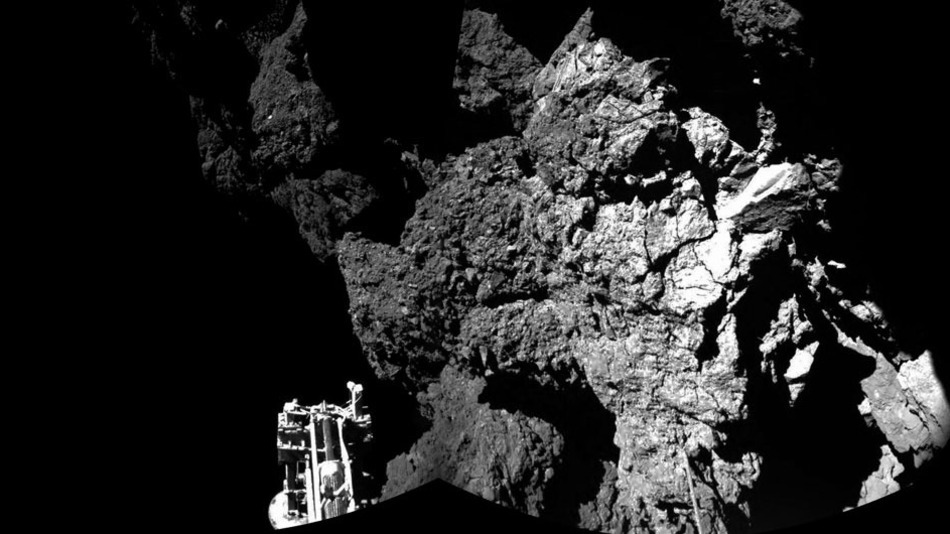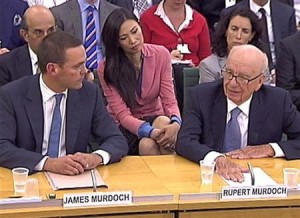 On the evening of 26th January at Creek Prince of Dubai City this writer met an ex Shell Employee who refused to be identified. He worked in Bangladesh before the liberation of Bangladesh .He claimed to have been involved in the discovery of some major gas fields in Bangladesh during that period. We were enjoying festivity of fire of Dubai Festival and cultural shows of different countries of the world. When I introduced myself as Ex Bangladesh Gas Sector professional he asked me about present situation of Shell Owned Gas Fields. He also asked why Bangladesh in 40 years failed to more professionally assess its gas reserve and resources. He also asked why the leakage of the major Gas Field Titas could not be remedied in years.
On the evening of 26th January at Creek Prince of Dubai City this writer met an ex Shell Employee who refused to be identified. He worked in Bangladesh before the liberation of Bangladesh .He claimed to have been involved in the discovery of some major gas fields in Bangladesh during that period. We were enjoying festivity of fire of Dubai Festival and cultural shows of different countries of the world. When I introduced myself as Ex Bangladesh Gas Sector professional he asked me about present situation of Shell Owned Gas Fields. He also asked why Bangladesh in 40 years failed to more professionally assess its gas reserve and resources. He also asked why the leakage of the major Gas Field Titas could not be remedied in years.
Engr. Khondkar Abdus Saleque
We shared our opinion in many areas. But I had no answer when he asked how long Bangladesh Gas Resources will last at the present and projected rate of use. Perhaps even present Gas Sector leaders are better placed to respond. When we find hundreds of crores of Taka is being spent in creating mid stream and downstream gas infrastructures one gets reasons to think that sector leaders have secret information of huge untapped gas resources which are not made public for some reasons.
What is the Present Proven Recoverable Gas Reserve?
Is there any qualified response or educated guess to this? Perhaps not. Is it 6, 7 or 10 Tcf? Several persons are making several statements. Persons in responsible positions find 2-3 tcf gas after some gas shows in 3D seismic survey s. Chevron and Santos only recently failed to discover additional resources even after getting positive indications on 3D seismic surveys at Moulavibazar and Shangu. There is no technology in the world which can accurately estimate recoverable gas reserve without drilling and testing. In this situation much hyped optimism by Petrobangla for addional resources at Rashidpoor, Sundalpoor and elsewhere may fuse like balloons in actual exploration drilling. Only few years back even Petrobangla used to trigger panic of gas reserve running out by 2015. Suddenly what wonder lamp of Aladdin Petrobangla got that Gas transmission and distribution networks are expanded to all parts of the country without any exploration plan, depletion strategy or utilization plan of gas resources? Experts always told Bangladesh is neither floating on gas neither the gas resource is going to run out too soon.Lne professionals and experts hardly got opportunities to lead the gas sector. People having little proven track records under political blessings messed around and have thrown gas system in total mess.
We know proven gas reserve is dynamic .As production process matures production engineers and reservoir engineers have more and more information about ultimate recoverable gas reserve. Recoverable gas reserve is continuously updated. We also know that Bangladesh is among the least explored gas prone river delta where almost entire offshore area and significant areas of onshore remains unexplored. Still our gas resource is not unlimited and definitely not for wasting in the present mode of exploitation and use. It is sad that in 40 years we could not agree on a credible figure of proven and recoverable gas reserve.
We could not formulate a depletion strategy or exploration plan. All our actions are on adhoc basis. Using Bakhrabad and Shangu Gas Fields as Golden Duck we created serious gas crisis for Chittagong area. Overproduction hastened early depletion of reserve. Injudicious production from Bakhrabad caused major damage to gas structure. Many feels Bangladesh did not learn lessons and again following same strategy for Bibiyana.
After discovery of world class Bibiyana Gas Field at Nabiganj of Habiganj Unocal proposed for construction of an export pipeline of 500MMCFD capacity seeking permission of exporting 300MMCFD to India. Donor agency like ADB backed up the move. Some persons favoring exports were telling that Bangladesh was floating on gas so limited export to give a market signal would not harm Bangladesh. Rather leading exploration companies would crowd into Bangladesh Gas Sector Upstream to explore unexplored resources. Greater section of civil society joined in a chorus against export of gas .Prime Minister of Bangladesh at a critical Joint media briefing standing beside US President Mr. Bill Clinton announced that Bangladesh could only think about gas export after ensuring 50 years assured reserve for its own people. Perhaps that statement among other reasons made that the government of that time loose the subsequent national election. The following government had declared policy of not leaving gas unexplored underground .However during their 5 years term they failed to explore and exploit new resources though they expanded utilization of gas to such an extent that demand started outstripping production. Crisis already started surfacing in 2003 as hundreds of energy inefficient medium and large industries mushroomed in the congested energy corridors of greater Dhaka and Chittagong. The lone offshore Shangu gas field meeting major demand of Chittagong area started showing ominous signs of depletion. BNP led 4 parties Government developed Moulavibazar Gas Field and initiated actions for developing Bibiyana Gas Field after juggling for three years on gas export issue. But over the 5 years term no new gas fields could be discovered as exploration activities dropped down to almost zero. Chevron and Cairn were sitting on Gas Blocks 5, 7 & 10.Tullow did some works at block 9 without much success. BAPEX suffered from step motherly of Petrobangla and had little contribution to upstream sector from 2002-2008.Little known NIKO Resources getting hold of discovered gas resources of Feni & Chattak and virgin structure of Tengratilla caused to successive blow outs at Tengratilla.
The writer was a part of the process when development of Moulavibazar and Bibiyana gas fields were initiated in early 2004. A very pertinent Gas Sector development project named Gas Transmission Development Project [GTDP] was initiated in late 2004 wherein 3D Seismic Surveys, further Development of some major fields, some new gas pipeline compressor stations and some other critical gas transmission pipelines were included in GTDP. The truth is in 8 years since then most of the components of GTDP remains unfulfilled.
Usually gas transmission system is designed with a Maximum Allowable operating Pressure and minimum delivery pressure .When the gas field pressure depletes below the transmission pressure booster compressors are set up on producing wells as a measure of secondary recovery of gas wells . In some cases depending of nature of gas reserve and completion of gas wells there can be provisions for tertiary recovery. Unfortunately Bangladesh does not have such plans. There is hardly any monitoring of national gas fields on well head pressure depletion, increase of gas-water and Gas –Condensate ratio. Bottom pressure surveys are hardly done, well integrity is hardly carried out. Poor vision of gas sector leaders have reversed the situation of Petrobangla Owned Company and IOC contribution of Gas to Petrobangla Production causing additional financial burden on Bangladesh Government . Potential Gas Fields like Chattak, Tengratilla and Feni continue to remain out of production when nation is suffering from serious gas crunch. It is a sad commentary on the part of Petrobangla and EMRD that the dispute with NIKO could not be resolved in six years.
Unlike Power System Master Plan there is no approved Gas System Master Plan [GSDP] although a significant amount of work was done at one stage. Taking advantage of absence of GSDP and weak Petrobangla smart IOC has driven policy makers in adopting some unrealistic expansion development of Bibiyana Gas Field and a very expensive Jalalabad-Bibiyana –Dhanua Pipeline in the most aggressive Pipeline Route. The field in changed situation will be required to produce @ 1300-1400MMCFD. One of the Chevron operated field Moulavibazar Gas Field cannot possibly add much more, even the reserve of Jalalabad is not unending.
Bibiyana is the second largest gas field .We must not use it like a fool causing its speedy depletion. The gas Fired Power plants are implementation near Bibiyana Gas Field will require about 140-150 MMCFD Gas , for the 1500MMCFD capacity Ashuganj Compressor station about 700MMCFD gas must be delivered from Bibiyana . If now Bibiyana is required to produce another 500MMCFD for the ill conceived Bibiyana Dhanua Pipeline one must try to assess how long Bibiyana reserve will last at 0.5 Tcf gas productions per year.
We have seen a report in a Bangladesh daily quoting Energy Secretary .He claimed that there is possibility of getting significant new reserve in the greater Sylhet Region. We are not sure about the basis of such optimism. Santos and Chevron recently failed to discovered new resources at Shangu and Moulavibazar even after finding positive shows in 3D seismic images. We must not feel complacent about some positive shows in 3D surveys at Rashidpoor gas field. There may be some addional resources which require confirmation after appraisal cum development drilling. But all these does not justify spending crores of Taka on an unnecessary pipeline in a difficult terrain and nightmare for a pipe-liner for subsequent operation. A major gas pipeline is designed for at least 25-30 years operating life .If properly maintained the pipelines can operate safely for 40-50 years. In the present circumstance Jalalabad-Bibiyana–Dhanua Pipeline will not have enough gas to transport after 10 years. Can Bangladesh afford to throw money in waste bins? Why not construct Koillashtilla –Rashidpoor loop line to evacuate the gas stranded now at Jalalabad? Why not conduct on stream pigging to restore the design capacity of pipelines in the North South Corridor?
Titas Gas field is badly bleeding for several years .It is sad that in so many years Petrobangla failed miserably to diagnose the problem. Fast track drilling was wrongly conceived and logically failed to take off. Government has managed to ink an agreement with Russian Gas Giant GAZPROM for drilling 10 wells of which 4 will be at Titas. Even when GAZPROM mobilize to work at Titas it is strongly recommended that the real cause of gas seepage from Titas Gas Field must be assessed first prior to any further drilling at Titas. We must not forget that BAPEX in amateur attempt to work over well #3 almost caused a blow out which led to killing a better performing well .Seepage management of a troubled gas field is a not a rocket science. There are few companies of international repute. Through transparent process one of them can be engaged .Any disaster at Titas Gas Field may trigger collapse of national economy.
Will Santos Continue in Bangladesh?
Australian Oil Major Santos invested risk capital in depleting Shangu Offshore field in the gamble of exploring some additional resources. In the first two wells it failed to achieve success. The third well is showing encouraging result. The jack up drilling rig was due to be relocated to Magnama for exploration cum development well[s]. But it is already late January .In Bangladesh offshore it becomes extremely difficult to work in the Bay of Bengal after mid March. If Santos cannot mobilize at Magnama before Bay gets rough Santos may not continue in Bangladesh unless it has incentives to work in other blocks .It is inconceivable that Santos Policy Makers will venture to mobilize expensive drilling Rig and Crew for one or two wells. Santos earlier shown some interest for some other offshore blocks where Ocean Energy did very little over the years. These blocks were returned to Petrobangla. Why not Petrobangla and Santos renegotiate for these blocks. Under the same terms as in Shangu these blocks can be given to Santos. In the present circumstances Santos remains the major hope for early gas to Chittagong.
What Should Be Our Optimum Production Rate?
Let us consider our present left over proven reserve as 6 TCF .Let us conservatively estimate that another 6 tcf gas will be added through aggressive exploration and development. At 3000 MMCFD rate of production even that reserve will deplete completely in 8-10 years. By 2020 Bangladesh gas system may completely dry out. Are we leading to a situation when after 2020 Bangladesh gas system will flow only imported gas or LNG? It is crazy to even think that while we are going heaven and earth in dealing with hardly 6-8 Tcf left over proven gas reserve we are doing almost nothing with about 65Tcf equivalent coal resource.
What Needs To Be Done?
- Abandon Plan of Jalalabad –Bibiyana –Dhanua Pipeline and Construct Koillashtilla –Rashidpoor Loop line.
- Cap Bibiyana Production to 1000MMCFD.This will keep Bibiyana alive for 20 years at least.
- Construct Bi Directional Bakhrabad –Chittagong Loop Line. This pipeline may divert additional gas from Gas Grid to Chittagong. In future if addional resources are discovered in Chittagong from onshore or offshore prospects this pipeline can transport gas back to National grid .
- Immediately engage a competent company to assess the reasons for Seepage of Titas Gas Field and carry out remedial actions.
- Adopt a well conceived depletion plan of remaining gas resources bringing in secondary and tertiary recovery into consideration.
- Adopt a sensible exploration strategy. Immediately go for new bidding round for onshore and undisputed offshore blocks. Bangladesh must have at least 10 exploration rigs working round the year in efforts to explore additional resources .However PSC Document needs positive amendments creating required incentives for oil majors.
- Rationalize gas use for Fertilizer and Industrial use only. Greater incentives may be given to LPG for countrywide expansion of LPG coverage. All kinds of fiscal incentives must be given to import and bottling of LPG.
- Actively engage with TAPI [Turkmenistan-Afghanistan-Pakistan-India] Group for extending TAPI to Bangladesh. It is very much possible to import about 1000MMCFD gas through this major Transborder open access pipeline .Talks for this must start now.




































